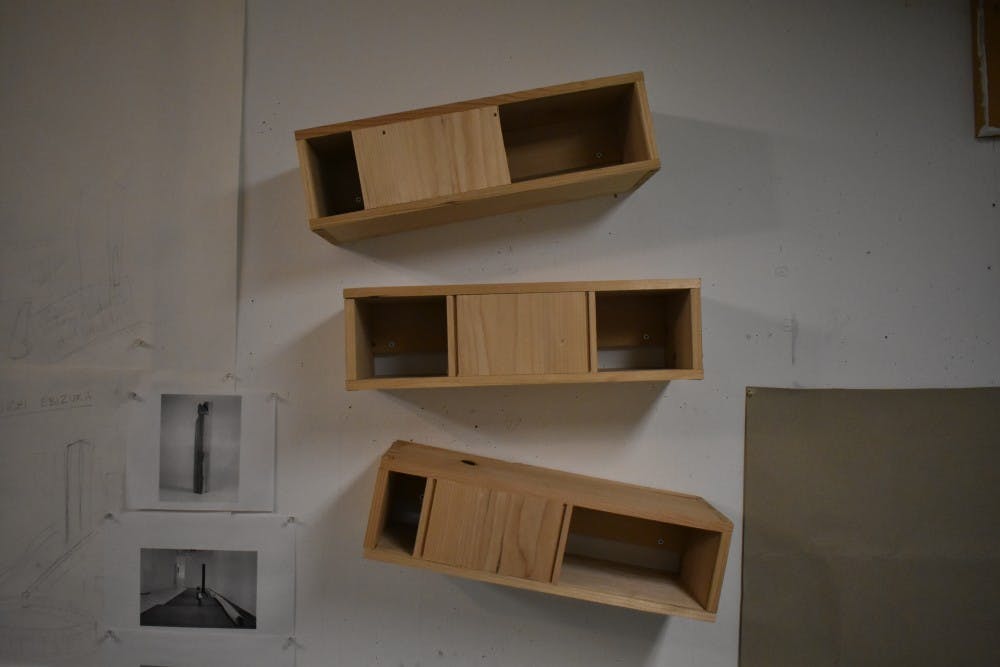The hallway is lined with trash cans filled to the brim. In them are paper towels used to wipe away accidental errors, that line of paint a little out of place, and the smudge on the side of the canvas. In my own field of vision, there’s four giant yellow rectangles, all marked “Flammable”—far too many for a single narrow hallway, in my opinion. But perhaps not for this specific place. I’m at the Duhring Building, the studios of seniors in the Fine Arts Department and where, last Thursday, the Open Studio for the Fine Arts Senior Project took place.
With my mouth full of cinnamon sugar from a donut, I walk into the first room. Wooden planks sit parallel on the ground with perfectly rectangular openings whittled at the two ends of a few. Together, the planks are a set of components to “a puzzle without a solution,” as the artist Michael Ferrin (C '19) said. It’s meant to be an interactive sculpture; for Michael, it’s especially interesting to see what people make out of it. Up above hang three other wooden pieces. A wooden dresser is my first guess. The choice of wood as the primary medium is what makes Michael stand out for the crowd of other pieces of art. After having gone to school for furniture making and then working at a wood shop, for Michael, wood is both “organic and warm.” And in this element, he’s made a piece of art from himself for others.

Into the next room is a wall plastered with sheets ranging from a total black to a total white. It’s a monotype of different materials. After covering the sheet in black, each subsequent piece was made through erasure of the black through different materials, such as oils and Q–tips. “I wanted to think of it as erasure as a purposeful act,” said Ella Konefal (C ‘19). It’s part of her overarching theme of mark–making and archiving. “I was thinking about archives and the traces that people leave and how we construct narrative out of these,” she said. “It made me examine my own way of archiving in 2D–modeling.” But she’s not limiting herself to 2D–modeling. As her project continues, she’s considering a transfer to sound, to show the transience of it, yet its physicality in an occupied spacetime.
Across from her is the studio of Donna Mastrangelo (C ‘19). Five paintings of swirling vortices of color are the focus. Representing addiction, alcoholism, and depression, the paintings also contain the words “Sad,” “Scared,” “Worried,” and “Hope,” reflecting the feelings of those who see their loved ones battle with such demons. The words are faint, almost as if they’re being swallowed by the motley of colors.

But these were only a few of the projects the seniors in fine arts are working on. Many of them are transversing barriers and crossing boundaries in their choice of medium and content. And all of that can be seen at the end of this semester.







